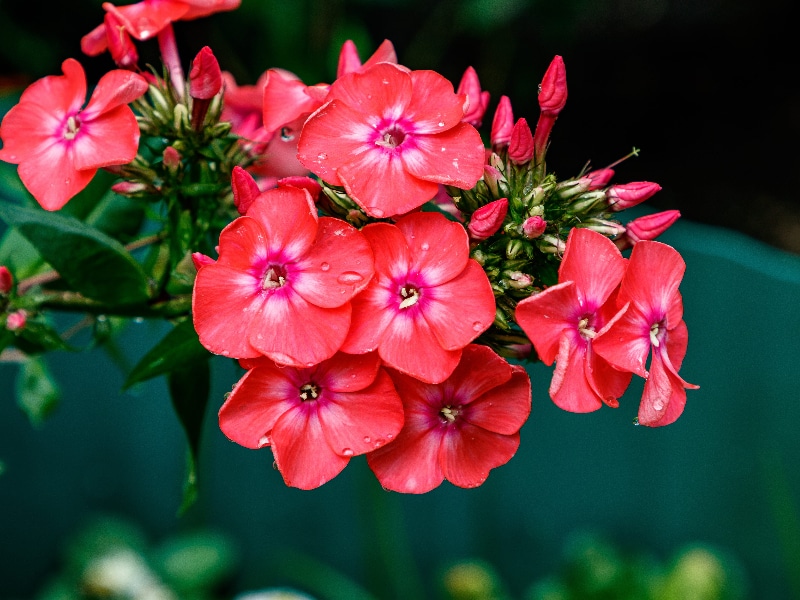Knowing how to grow phlox from cuttings is easy because it only takes two steps. Propagating phlox is generally comfortable, and you can divide them, but it’s understandable why most gardeners prefer starting phlox from cuttings. The fact that there are several phlox species even makes it more exciting to create more plants for your garden, and you can be sure that you’ll get a plant that’s true to the variety’s characteristics.
However, propagation and starting plants will always be a sensitive step in any plant. You want to provide the ideal growing environment for phlox, which is easy to achieve with a greenhouse’s stable conditions. Once you’ve successfully established phlox, maintenance will be smooth sailing and as comfortable as cutting back foliage.

How To Grow Phlox From Cuttings: Complete Easy-To-Follow Guide
Step #1. Taking cuttings
The first step is gathering the cuttings themselves. You want the sections you’re getting to be disease-free, and the parent plant itself is healthy. Some gardeners also recommend watering the phlox the night before you plan on taking the cuttings.
In general, you can take the cuttings either in summer or fall or when phlox is actively growing. You can plant the cuttings in fall, but you can also root them in the greenhouse and still have a productive season. Cut a 6-inch section below a leaf using a sharp and sterilized knife.
Make sure that the cuttings you have are free of flowers and have at least a leaf. Much like rooting other plant cuttings, you want to remove the bottom leaves except those at the top. You can also dip the end in rooting hormone powder to encourage root development, but phlox are known to rooting easily anyway.
Step #2. Rooting cuttings
Once you have your cuttings, you can plant them for root establishment. You want a moist yet well-draining medium and gardeners often use a mix of sand, peat, and perlite. Using a greenhouse can be advantageous for phlox development because you can maintain the ideal environment for the cuttings.
The location for them should be bright but out of direct sunlight and away from harsh temperatures and conditions. You can also cover the container with a plastic bag to create a moist environment. Still, you should always check your cuttings for potential mold growth or if they need watering.
The cuttings should develop roots around four weeks, given that you maintained the greenhouse between 65 to 75°F. You can also gauge if you can transplant at this point. However, remember to harden your young plants first before planting them outdoors.
How To Take Care Of Phlox
Like most plants, you want to transplant your cuttings in spring after the danger of frost has passed. Please choose an area with fertile and well-draining soil and keep it moist. However, it’s worth emphasizing that you have to check your phlox species’ specific requirements because some prefer shade, while others require light exposure.
For the maintenance itself, you want to maintain moisture and regularly water the plants, especially during hot days. You can also mulch and add compost on the site every spring to help keep the ground moist. And depending on the phlox you have, you can fertilize with an all-purpose fertilizer early in spring.
Do phlox need deadheading? Removing faded blooms will encourage reblooming and an overall neater look on your plants. You can also cut back your plants after the first frost in the fall to maintain your phlox.
Common Problems Of Phlox
Using the greenhouse is not only useful to support the growth of phlox cuttings. The controlled indoor conditions and practices also help prevent the common diseases and pests of phlox. For example, anyone who has grown phlox has probably heard or encountered the fungal disease called powdery mildew.
Simple environmental conditions and general practices should help prevent powdery mildew. For example, you want to make sure that you don’t get your plants’ foliage wet, and their space offers good air circulation. Hot and humid weather also encourages this disease, so be mindful if your climate is harsh.
When it comes to pests, you can always do preventative measures to keep bugs out of the greenhouse. Phlox is especially prone to spider mites, but much like powdery mildew, they are common in hot conditions. Always check your plants and isolate those with pests immediately.
Conclusion
The various phlox plants available makes them one of the most exciting groups to cultivate. If you have favorite varieties or cultivars, it’s essential to know how to grow phlox from cuttings for a fuss-free way of getting more plants. It only takes two steps, which are collecting and rooting, and you can use a greenhouse to create a stable environment for phlox establishment.
You can start collecting cuttings in summer or fall, and you can root in the greenhouse to protect the young plants from extreme climate. Phlox cuttings also readily develop roots, but you can speed the process by using a rooting hormone. Afterward, please place them in a moist and well-draining mix onto a bright location.
Your plants should be ready for transplanting after four weeks, and later on, you can divide the more mature phlox plants.
